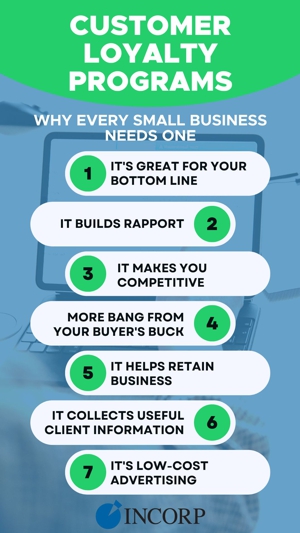Stay in the know!
Join our newsletter for special offers.
Most people have at least one loyalty card in their wallet, and probably several loyalty tags attached to their keyring. Whether for a coffee shop, a grocery store, or a favorite clothing store, these programs allow us to receive discounts or earn points at certain retailers. Should your small business start a loyalty program? There are a few things to consider.
Loyalty programs that reward customers for repeat business can be hugely successful, and they aren't just for airlines and large national companies. They can also keep customers coming back to their local beauty shop or car wash, and a program can be started with a very small investment.
The first step is to determine whether a loyalty program is a good fit for your business. If you sell large-ticket items that people only buy once every few years, it wouldn't make sense, but if you serve the same customers often and would like to earn and keep repeat business, it makes sense to investigate this option as part of your marketing plan.
There are many reasons to reward customers for giving you their repeat business. Here are just a few:
Return customers are great for your bottom line. One expert estimates that a 5 percent increase in customer retention can increase your profits by more than 25 percent.
A loyalty program can help build connections with customers. If they keep coming back to get rewards, you'll have more chances to learn what they like, greet them by name, and develop a long-lasting relationship.
It can give you an edge over competitors if you offer the same kinds of products with similar pricing.
Repeat customers are likely to spend more. According to a report by Manta and BIA/Kelsey, a repeat customer spends 67 percent more on a given purchase than a new customer does.
Retaining customers costs less than spending your marketing dollars to find new ones. Experts estimate it costs between 2 and 10 times more to find a new customer than it does to retain a current one.
It lets you gather names and contact information for your database, which can be used to send targeted emails or printed offers.
Every time your customer opens their wallet and sees your card, it reminds them of your company.
Loyalty programs range from simple punch cards to expensive customer relationship software. Here are some examples:
These tried-and-true solutions are a good place to start for a small business like a donut shop or beauty salon. They offer the advantage of being cheap to initiate and easy to maintain. Disadvantages are that cards are easy to lose, and they don't give you the ability to track any customer information.
Customers showing a loyalty card can receive a discount, which can be a powerful incentive to return to your business instead of going to a competitor.
These programs use software to track purchases by customers who joined your loyalty club. After reaching a certain threshold, they can use points to get rewards or free merchandise. The ability to track purchases can provide valuable information about customer preferences.
With more and more people using smartphones to locate local businesses, it makes sense to investigate whether a mobile app for customer rewards will work for your company. Belly, Front Flip, LoyalBlocks, Perka, SpotOn, and many others offer programs at a relatively low cost that may also include tools to help you track customer behavior.
By getting together with another business in a similar field, you may be able to develop some synergy. For example, customers at your pet store can get a discount at the local vet, and vice versa.
Collect email addresses so you can send coupons or special offers to your "preferred customers." These targeted emails have a much greater chance of success than emails shotgunned out.
The customer must believe that it's easy to get the reward, but you don't want to give away too much. For example, "After 9 carwashes, you get 1 free" makes more sense than "after 50 carwashes" or "after 2 carwashes." Find a number that works for your company, and adjust it later if necessary.
One important reason to have a loyalty program is to gather information about your customers, but they may be reluctant to take the time to fill out paperwork or to give you their personal information. Encourage them by offering an immediate discount or a free item.
Anyone can give a 10 percent discount, but if you offer a chance to spin the Jackpot Wheel and win a prize, people will remember you.
Everyone wants to be a VIP. If you can segment your customers, offer rewards or special sales just for those in your highest tier.
For example, members of the loyalty program at your pet grooming salon could be invited to an obedience class with a professional dog trainer.
Have opt-in forms to your loyalty club available on your website, at your cash registers, and anywhere else you interact with the public. Be sure to ask for email addresses so you can add them to your email distribution list.
Send them emails with useful content (not just ads and coupons) and ask for feedback to help you tweak your offerings according to their preferences.
If your program provides feedback, measure how many people are using the program and how their behavior differs from non-members. Then you should be able to determine if it's worth the cost of continuing.
Join our newsletter for special offers.
